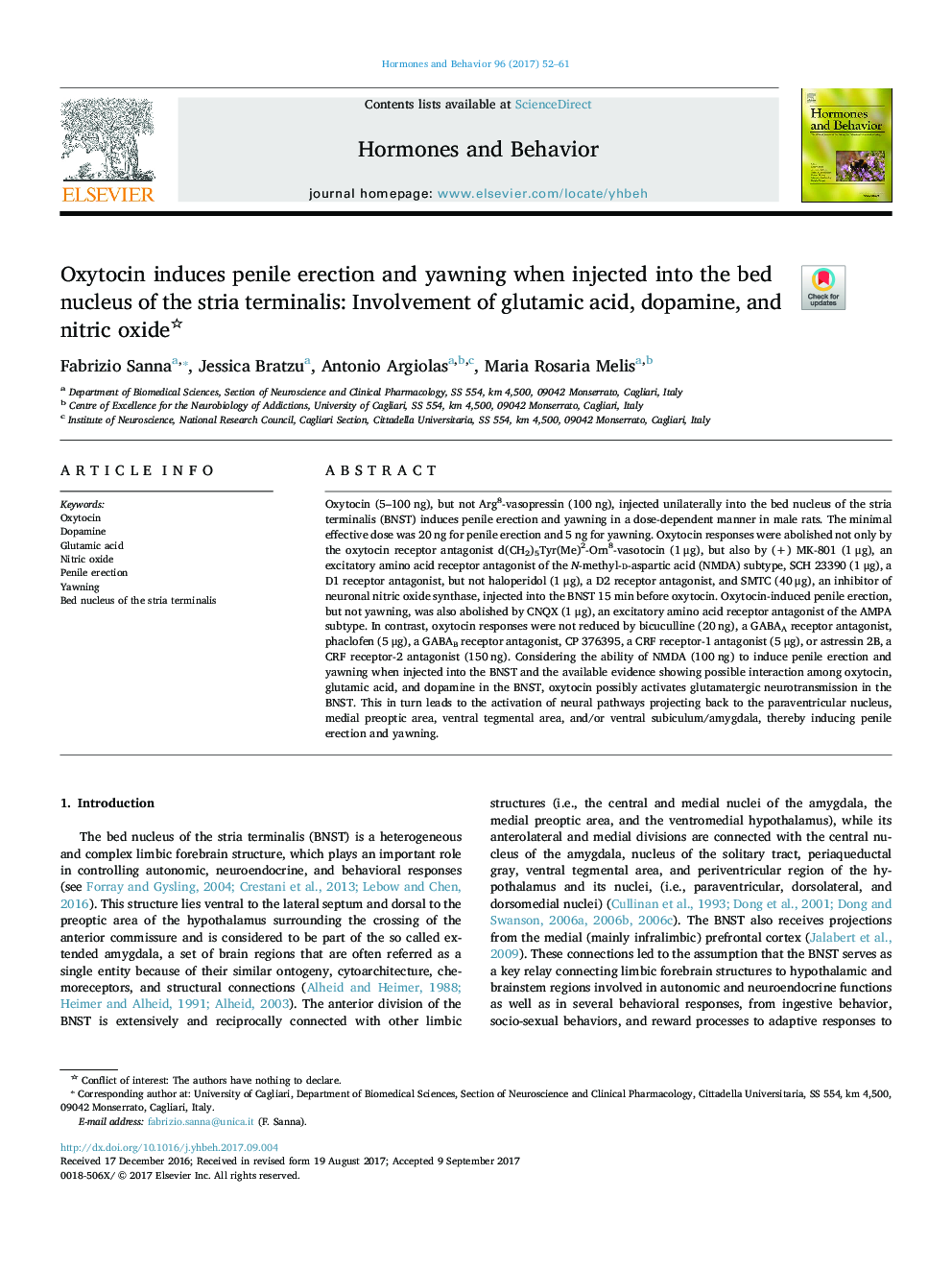| Article ID | Journal | Published Year | Pages | File Type |
|---|---|---|---|---|
| 6794203 | Hormones and Behavior | 2017 | 10 Pages |
Abstract
Oxytocin (5-100 ng), but not Arg8-vasopressin (100 ng), injected unilaterally into the bed nucleus of the stria terminalis (BNST) induces penile erection and yawning in a dose-dependent manner in male rats. The minimal effective dose was 20 ng for penile erection and 5 ng for yawning. Oxytocin responses were abolished not only by the oxytocin receptor antagonist d(CH2)5Tyr(Me)2-Orn8-vasotocin (1 μg), but also by (+) MK-801 (1 μg), an excitatory amino acid receptor antagonist of the N-methyl-d-aspartic acid (NMDA) subtype, SCH 23390 (1 μg), a D1 receptor antagonist, but not haloperidol (1 μg), a D2 receptor antagonist, and SMTC (40 μg), an inhibitor of neuronal nitric oxide synthase, injected into the BNST 15 min before oxytocin. Oxytocin-induced penile erection, but not yawning, was also abolished by CNQX (1 μg), an excitatory amino acid receptor antagonist of the AMPA subtype. In contrast, oxytocin responses were not reduced by bicuculline (20 ng), a GABAA receptor antagonist, phaclofen (5 μg), a GABAB receptor antagonist, CP 376395, a CRF receptor-1 antagonist (5 μg), or astressin 2B, a CRF receptor-2 antagonist (150 ng). Considering the ability of NMDA (100 ng) to induce penile erection and yawning when injected into the BNST and the available evidence showing possible interaction among oxytocin, glutamic acid, and dopamine in the BNST, oxytocin possibly activates glutamatergic neurotransmission in the BNST. This in turn leads to the activation of neural pathways projecting back to the paraventricular nucleus, medial preoptic area, ventral tegmental area, and/or ventral subiculum/amygdala, thereby inducing penile erection and yawning.
Keywords
Related Topics
Life Sciences
Biochemistry, Genetics and Molecular Biology
Endocrinology
Authors
Fabrizio Sanna, Jessica Bratzu, Antonio Argiolas, Maria Rosaria Melis,
